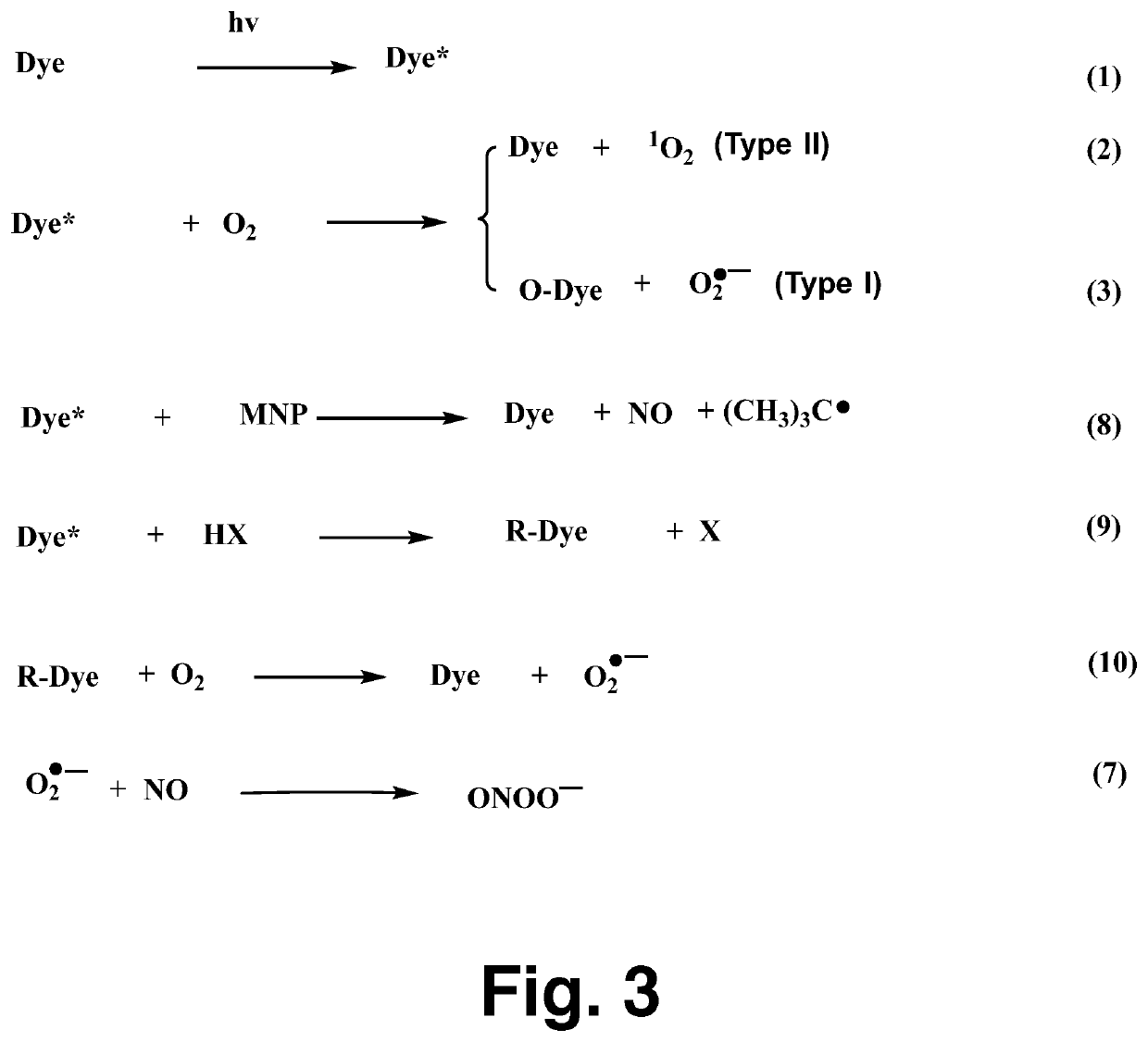Photosensitized release of nitric oxide
a technology of nitric oxide and photosensitization, which is applied in the direction of nitric oxide, nitrogen oxide/oxyacid, organic chemistry, etc., can solve the problems of apoptosis or necrotic cell death, the possibility of releasing no before reaching the tissue site is still a major problem, and the rate of releasing no at the tissue site using those systems is difficult to be controlled
- Summary
- Abstract
- Description
- Claims
- Application Information
AI Technical Summary
Benefits of technology
Problems solved by technology
Method used
Image
Examples
Embodiment Construction
Materials and Methods
Materials
[0016]Alanosine (3-(hydroxynitrosoamino)-D,L-alanine, FIG. 1, was obtained from the NCI DTP Repository (Rockville, Md.). The dye aluminum phthalocyanine tetrasulfonate (AlPcS4) was purchased from Frontier Scientific. The compounds ubiquinone-0 (UBQ-0), ferricytochrome c, MNP, HX, L-tyrosine, carboxy-PTIO, superoxide dismutase (SOD, from bovine erythrocytes) and 3-nitrotyrosine were purchased from Sigma-Aldrich Co. All solutions were prepared in phosphate buffer and used the same day. Deionized and Chelex-treated water was used in the preparation of all stock and sample solutions. Chelex treatment of water and buffer was monitored using the ascorbate test, as described by Buettner. Care was always taken to minimize exposure of solutions to light.
Methods
Sample Irradiation for EPR Analysis
[0017]The NO probe, carboxy-PTIO, was used to detect NO formation from the production of the carboxy-PTI EPR spectrum, as reported previously. Air- or N2-saturated sample...
PUM
| Property | Measurement | Unit |
|---|---|---|
| pH | aaaaa | aaaaa |
| power | aaaaa | aaaaa |
| pH | aaaaa | aaaaa |
Abstract
Description
Claims
Application Information
 Login to View More
Login to View More - R&D
- Intellectual Property
- Life Sciences
- Materials
- Tech Scout
- Unparalleled Data Quality
- Higher Quality Content
- 60% Fewer Hallucinations
Browse by: Latest US Patents, China's latest patents, Technical Efficacy Thesaurus, Application Domain, Technology Topic, Popular Technical Reports.
© 2025 PatSnap. All rights reserved.Legal|Privacy policy|Modern Slavery Act Transparency Statement|Sitemap|About US| Contact US: help@patsnap.com



